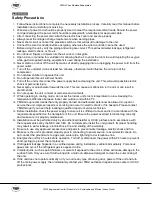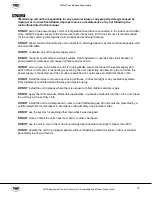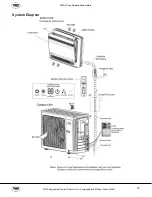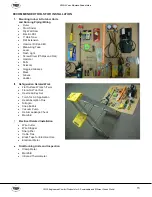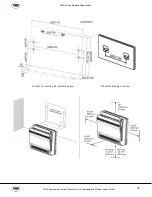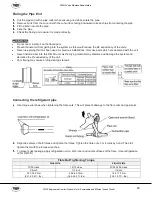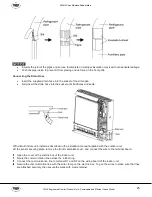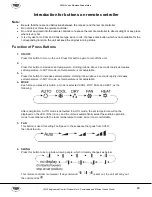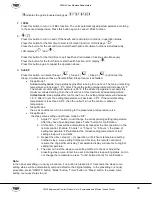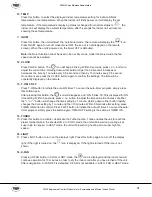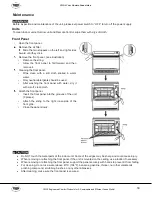
YMGI, Engineered Comfort Products for A Sustainable and Efficient Green World!
YMGI: Your Modern Green Idea
24
Piping Handling
Protect the open end of the pipe from dust and moisture.
All pipe bends should be as gentle as possible. Always use a pipe bender for bending.
(Bending radius should be 30 to 40mm or 1-1/4 to 1-9/16 inches or larger.)
Selection of Copper and Heat Insulation Materials
When using commercial copper pipes and fittings, observe the following:
Insulation material: Polyethylene foam: heat transfer rate: 0.041 to 0.052 W/mK (0.035 to 0.045 kca/(mh
℃
)
Refrigerant gas pipe’s surface temperature can reach maximum temperatures of 110
°C (230
°F). Choose heat
insulation materials that will withstand this temperature.
Be sure to insulate both the gas and liquid piping lines and to provide adequate insulation. The table below shows
the recommended dimensions.
Gas side
Liquid side
Gas pipe
thermal insulation
Liquid pipe thermal
insulation
07/09 class
12/18 class
-
07/09 class
12/18 class
-
O.D.9.52mm
(3/8 in)
O.D.12.7mm
(1/2 in)
O.D.6.4mm
(1/4 in)
I.D.12-15mm
(1/2
– 5/8 in)
I.D.14-16mm
(9/16 -5/8 in)
I.D.8-10mm
(5/16 - 7/16 in)
Thickness 0.8mm (1/32 in)
Thickness 10mm (3/8 in) Min.
Use separate thermal insulation pipes for gas and liquid refrigerant pipes.
Checking for Gas Leakage
Check for gas leaks after purging the air.
See the sections on air purges and gas leak checks in the installation manual for the outdoor unit.
Attaching the Connection Pipe
Attach the pipe after checking for gas leaks, described above.
Cut the insulated portion on the side of the piping, matching it up with the connecting portion.
Secure the slit on the refrigerant piping side with the butt joint on the auxiliary piping using tape, making sure
there are no gaps.
Wrap the slit and butt joint with the included insulation sheet, making sure there are no gaps.



